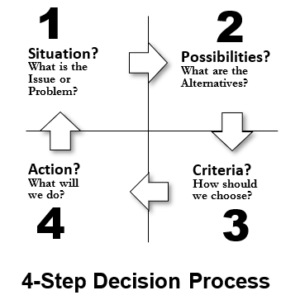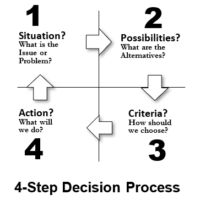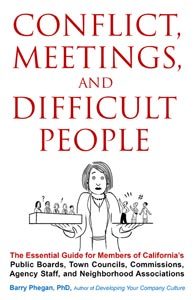
Washington is locked in a political battle that’s bad for our nation. When the opposition blocks action by the party in power — just because it does not want that party to claim any success — the big loser is we citizens.
We have serious nationwide problems needing cooperation and action, not war and stalemate. Polls repeatedly show that most Americans want progress on climate change, immigration, inequality, unemployment, the pandemic, poverty and hunger, education, homelessness — to name just a few.
Until we vote more progressive people into office, I’ve largely given up on expecting cooperative solutions in Washington. But at the City and County level, we can test and demonstrate alternatives to the standard adversarial decision process we know all too well, the process that encourages the division and tribalism most of us reject.
To promote such local actions, I submitted an article to our county newspaper, The Marin Independent Journal. It was published on December 4th, 2020. Here it is.
♣
Leaders Must Build Community by Using Shared Values
Civic leaders can help build a better Marin by guiding us to common ground, rather than unintentionally supporting division.
Marin is openly divided around many issues, such as housing, diversity, the homeless, statues and school and street names, and land use. Public discussions traditionally begin as arguments over actions or solutions (what I want vs. what you want.) As we argue over what to do, we easily forget that underlying all issues is our common ground of shared values, and care and concern for our community. Local leaders can help us remember; I know because I’ve been there.
After 35 years as a university lecturer and director of a professional consulting firm helping major corporate leaders change their work cultures, I learned some guiding principles for building great places to work, principles that apply equally to elected and appointed government officials building great places to live — our Marin.
The key to making better decisions and creating great workplaces is common ground. After working with hundreds of people from dozens of diverse cultures, I learned this leadership lesson: No matter what the issue, if you want to build cooperation, teamwork, and a great place to work or live, tap into shared desires. One powerful way we did this was using a 4-step consensus process: First, understand the situation. Second, lay out the possibilities. Third, discuss how to choose. Fourth, choose what to do. Public decisions are usually fights over the fourth step, what to do.
Here’s how local leadership could use this process to identify this holy grail of common ground. It takes a little practice — and courage — especially when two opposing groups seem almost on the edge of a fistfight right there in the City Council room or your office. Just look questioningly and say something like:
“We are all here because we care deeply about this issue (or whatever). I believe we each want to be in a community that values inclusion, fairness, openness, and trust. It’s part of my job to help us show those values here, in how we discuss this issue and in making a decision we can all support.
“Let’s start by hearing from each of you why you’re here today, not what you want to do or what action you want us to take, we’ll get there later.
“Very briefly, tell us your story so we can better understand where you’re coming from. If it’s okay with you, I’ll take notes and summarize, as best I can, the main underlying concerns. Please be brief, and again, describe what happened that led you to get involved in this issue, your experience, your underlying concern.
“Who would like to begin?”
You will hear similar words from both sides, even about a seemingly divided issue. When a person slides back into, “what I want.” remind them to share their underlying experience or concern.
This directive meeting leadership question stays on the issue but focuses on the first step of collaborative decision-making, the problem. It does not focus on the last step, what to do — which is what people came to the meeting expecting to argue about. When people are asked to step back and share their underlying concerns, they see that “the other side” is on the same side. That’s how understanding and consensus begins.
By starting with the issue, rather than the answer, we can choose a path that efficiently solves real problems, builds community instead of division, and most importantly, supports the values we want to show to ourselves and our children.
I’m retired, volunteering, and passionate about our great community.
If you are in local government and would like to discuss this further, I invite you to contact me. Like you, I’m committed to a better Marin. Barry Phegan, Greenbrae, is author of the book “Conflict, Meetings, and Difficult People.” Email him at barry@phegan.com.
Please give me your ideas or suggestions on this or other blogs. I do appreciate your feedback.
Thank you.
me, Barry Phegan
Add Your Name below to my list to know when I have posted a new blog.





